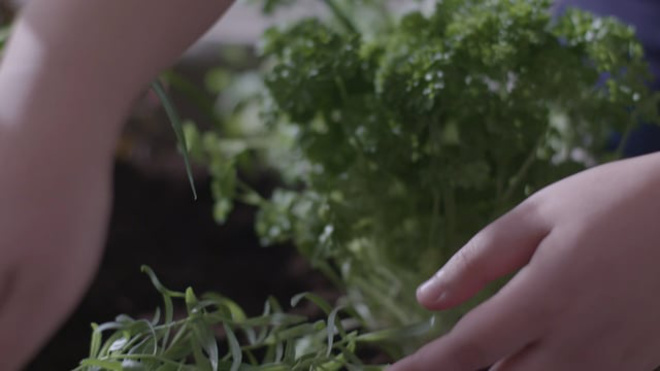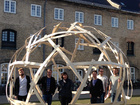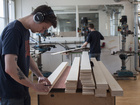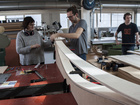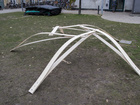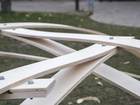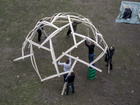Like everyone else, people fleeing war and poverty need to act and take ownership of their own lives, even when they are placed on standby in a refugee camp. So they need to build their own homes and water their own vegetables.
Currently, 65 million people are on the run from war, hunger and poverty, and every year sees an increase in the number of desolate, characterless tented camps that house people, whose normal life is put on hold indefinitely.
At the School of Architecture and Design on Holmen a team of researchers have erected a dome structure, which could help refugees to reclaim at least a scrap of the self-determination and freedom of action they have lost. The simple wooden structure represents a proposal for a brand new type of temporary home, which could be built by the destitute residents themselves.
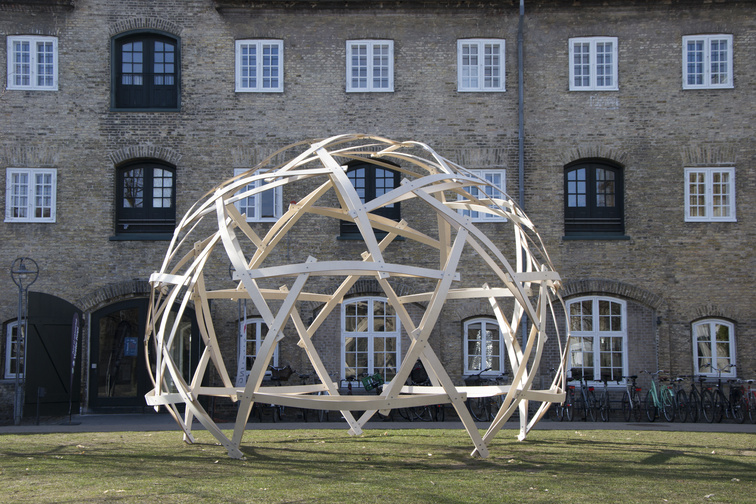
The dome structure, which consists of specially designed battens of plywood, is constructed on the basis the of so-called ‘reciprocal frames’ principle. The individual battens can be joined without the use of special joint units, and no more than two battens are ever connected in one joint. This makes the structure extremely simple and means that people with absolutely no previous skill would be able to build it.
Olga Popovic Larsen, a Professor at the Institute of Architecture and Design and one of the architects involved in the construction of the dome, explains how crucial this is.
“We know from numerous studies that traumatised people have a significant need to feel that they can regain some sort of control of their lives again, and that they can act and make changes in their lives. The dome structure paves the way for this, because they could build it themselves, and because the reciprocal frame principles make it possible to construct a variety of shapes and spaces as an alternative to the uniform refugee tents we use today,” says Olga Popovic Larsen.
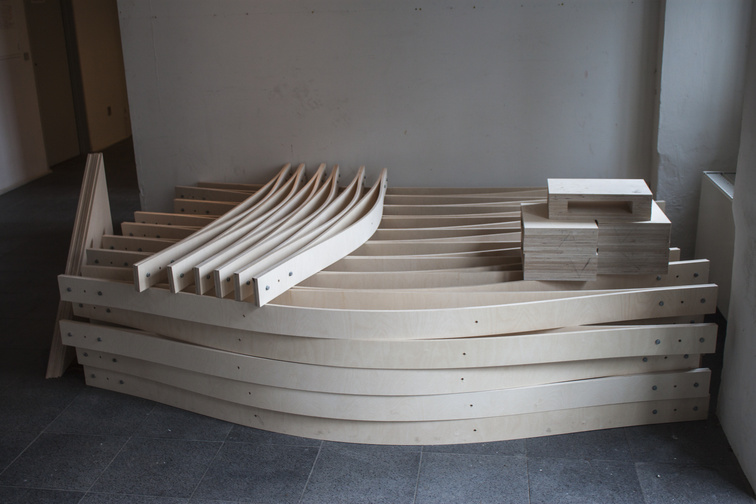
The dome structure has not yet been completed, but Olga Popovic Larsen points out that it would be possible to insulate the timber structure with breathable material, thereby providing a much better indoor climate than what a tent usually provides. The structure, weighing less than 200 kg, can also be taken apart easily and re-erected, making it not only mobile, but also sustainable. Finally, the use of cheap and simple materials such as plywood and screws means that the cost could be kept down to about DKK 6,000 per home.
“But the most important aspect is the fact that the structure can be built with absolutely no previous experience, thereby contributing to the refugees’ sense of self and worth. We could enable them to act and take ownership of a small but significant part of their lives again – their homes,” says Olga Popovic Larsen.
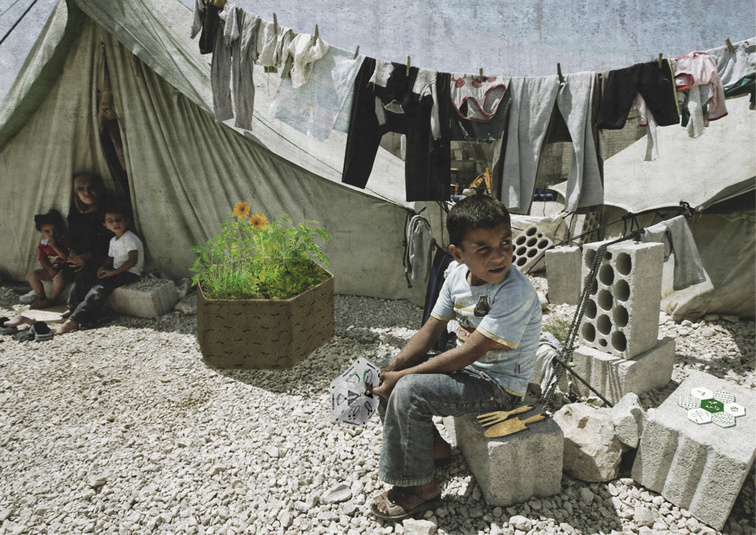
The same philosophy is key to the graduation of project of the Architecture graduate, Renata Gonatos: the ‘Oasis Kitchen Garden Kit’. It is a vegetable garden complete with tools, seeds and instructions for an irrigation system. The simplicity of Gonato’s project is based on the premise that refugee families, not to mention their children, could grow their own vegetables, even on the most limited plot and very cheaply. The kit has been designed so that anyone, regardless of language and reading proficiency, could take advantage of it. Instead of text, the instructions use easily de-codable illustrations, which are simple to understand and follow.
“The vegetable garden kit provides a framework for activity and experience in refugee camps, where space and spiritual sanctuaries are something rare. The experience of the green growth aims to provide refugees with mental stimulation in a pleasant space, their personal oasis, while the concept also contains nutritional, social and sustainable aspects. To experience nature and to get something to grow and sprout are intrinsic human needs, even (maybe especially) for people on the run,” says Renata Gonatos.


